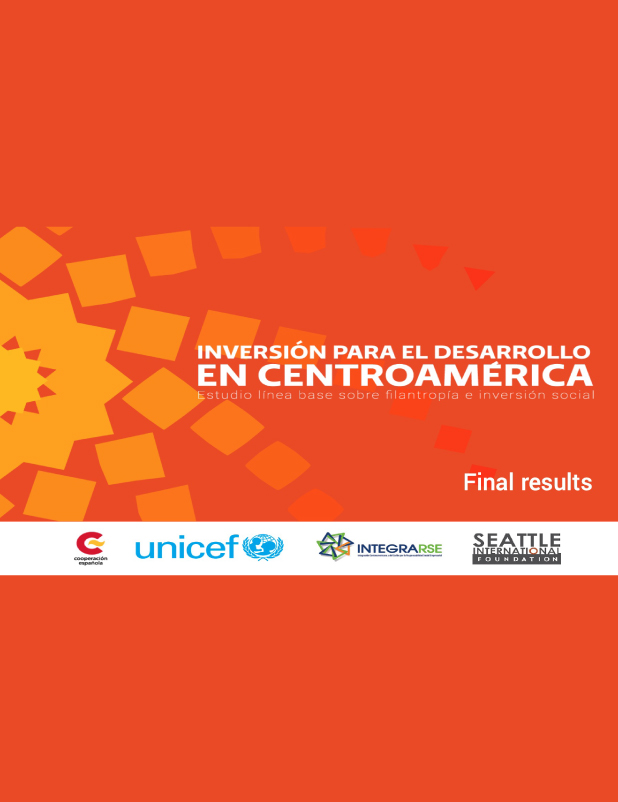
- Cooperación Internacional
- Creación de Valor Compartido
- Filantropía
- Inversión Social
- ONG
La presentación resume los resultados del Estudio sobre Fondos para la Inversión Social y Filantropía en Centroamérica, de carácter exploratorio y realizado entre julio y diciembre del 2015.
Esta presentación en inglés resume los hallazgos obtenidos del Estudio sobre Inversión Social y Filantropía en Centroamérica:
FINDINGS
1. The main subjects to which companies turn their social investment are education, in first place, followed by environment, health, employment and economic development of the community.
2. The major target population of companies’ social investments are communities of direct impact of the company, followed by people living in poverty and children. The main populations served by NGOs are people living in poverty, childhood, adolescence and youth.
3. The resources for social investment by the private sector are majorly of national origin; in the case of NGOs, their resources come mainly from international cooperation and, to a lesser extent, the execution of public resources.
4. In the Central America, 130 companies – mostly national – have invested in the past three years an average of US$134.7 million annually in social investment and philanthropy projects and programs.
5. In many cases, the social investment projects and programs of social investment by companies are not only aligned to the core of the business and their stakeholders, but also aligned to the main development challenges of the region.
6. Most companies implement long-term programs, except for those that support infrastructure investment, whose projects have to do mostly with the donation of materials and equipment.
7. Most companies have partnerships with NGOs and other organizations and institutions. However, partnerships are mostly for the implementation of specific social investment projects and not necessarily imply a strategic alliance of medium and long term. Nevertheless, there are some isolated experiences of public policy advocacy by organizations involved in social investment projects.
8. A major weakness in monitoring and evaluation of the impact of social investment activities has been observed. Few companies and NGOs measure the outcomes and impacts of their projects.
9. Internal communication is widespread and companies pay much attention to this issue. External communication is not something that interests them most; there are no specific communication budgets and even some companies expressed openly that they prefer to invest these funds in other areas than in communication.
10. It is necessary to strengthen the relationship and mutual understanding between the business sector and NGOs.